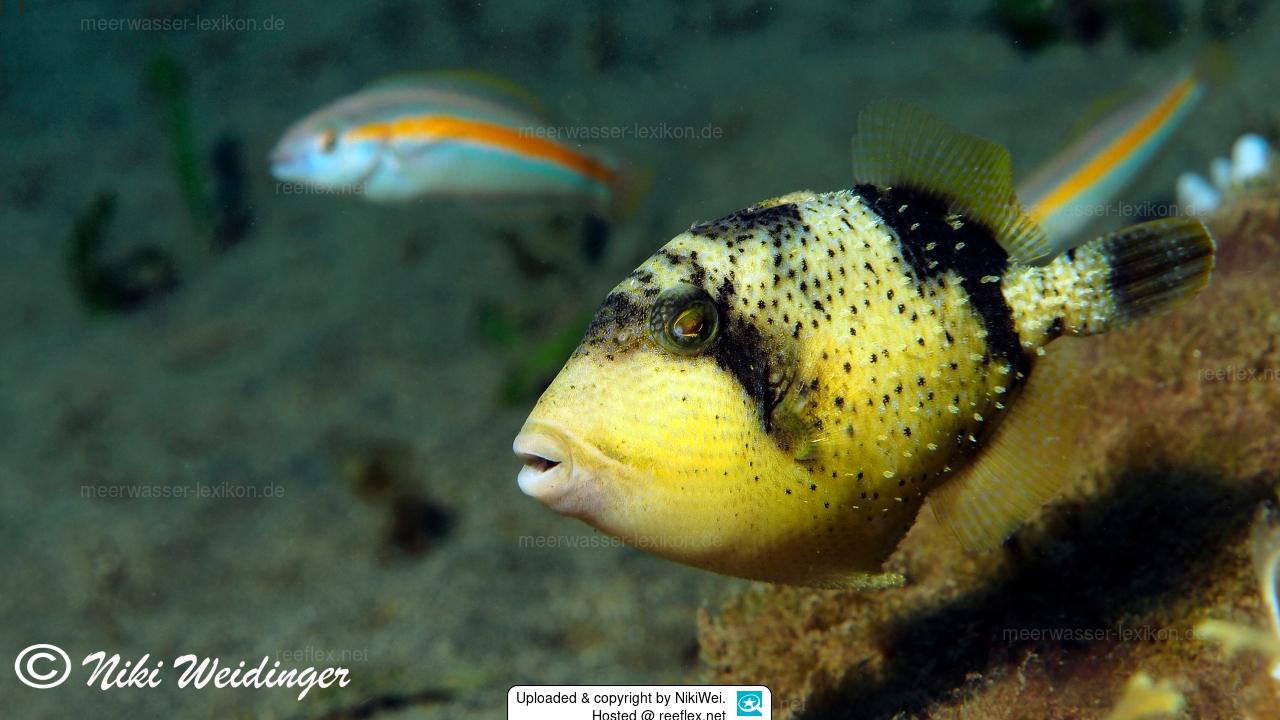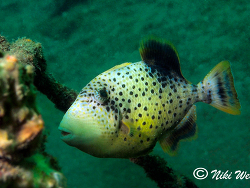Info
Abalistes stellaris (Bloch & Schneider, 1801)
The first picture for this entry was kindly provided by Prof. Dr. Robert A. Patzner and was taken in Papua New Guinea.
Inhabits muddy and silty sandy bottoms.
Adults are often found on deep coastal slopes and reefs.
They often swim high above the ground, sometimes in estuaries in brackish water.
Young animals seek shelter in protected, coastal bays and estuaries.
Due to their size of 60 cm, they are certainly not suitable for a home aquarium.
Shrimps/small fish in the aquarium?
Due to their natural hunting instinct, shrimps or even small fish are regarded as food and, if they are the right size, will be hunted and eaten.
Cleaner shrimps can also fall victim to the hunter if they are hungry enough.
Inhabit coastal areas mostly on muddy and sandy bottoms and near reefs, together with sponges and algae. Adults live on deep coastal slopes and usually swim high above the bottom, sometimes also in estuaries. Juveniles live in sheltered coastal bays and estuaries with piles of rubble or debris on open ground. There they look for small fish, crustaceans and benthic invertebrates to feed on.
The first picture for this entry was kindly provided by Prof. Dr. Robert A. Patzner and was taken in Papua New Guinea.
Inhabits muddy and silty sandy bottoms.
Adults are often found on deep coastal slopes and reefs.
They often swim high above the ground, sometimes in estuaries in brackish water.
Young animals seek shelter in protected, coastal bays and estuaries.
Due to their size of 60 cm, they are certainly not suitable for a home aquarium.
Shrimps/small fish in the aquarium?
Due to their natural hunting instinct, shrimps or even small fish are regarded as food and, if they are the right size, will be hunted and eaten.
Cleaner shrimps can also fall victim to the hunter if they are hungry enough.
Inhabit coastal areas mostly on muddy and sandy bottoms and near reefs, together with sponges and algae. Adults live on deep coastal slopes and usually swim high above the bottom, sometimes also in estuaries. Juveniles live in sheltered coastal bays and estuaries with piles of rubble or debris on open ground. There they look for small fish, crustaceans and benthic invertebrates to feed on.







 NikiWei
NikiWei













